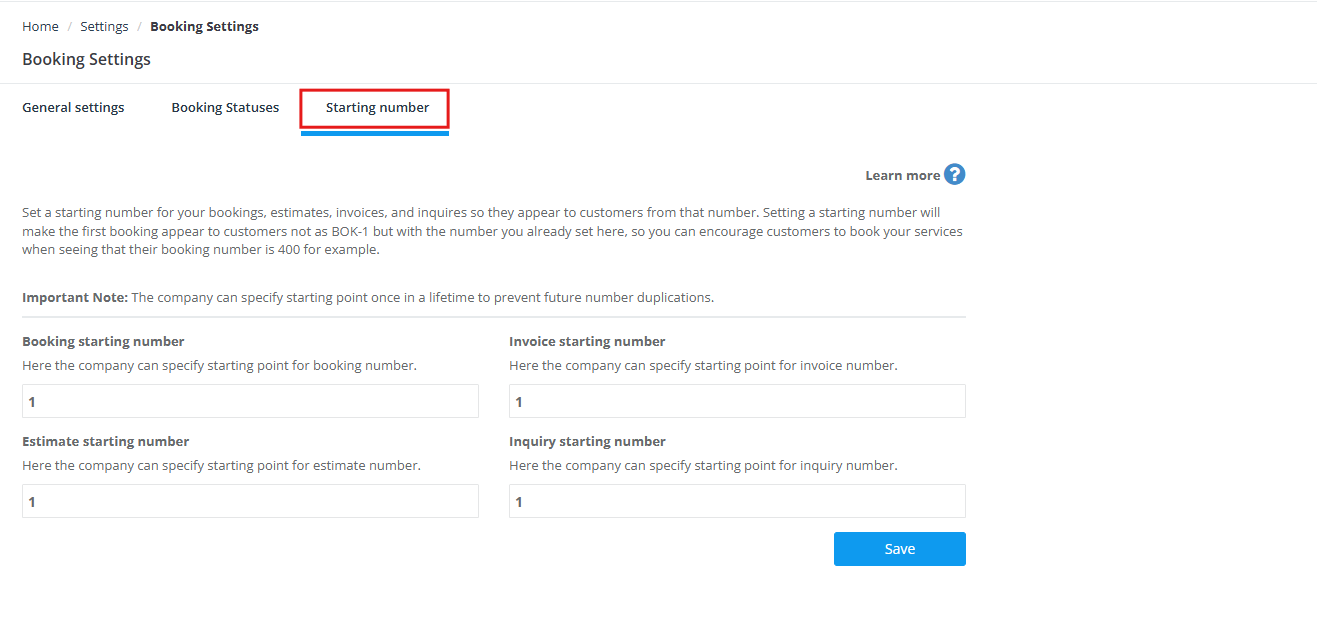Setting Starting Numbers for Bookings, Estimates, Invoices, and Inquiries
OctopusPro allows you to define starting numbers for your key records—bookings, estimates, invoices, and inquiries—so you can begin from a higher value than the default “1” (e.g., starting at 400). This can help your business appear more established and align with any existing internal numbering systems.
Why Customize Starting Numbers?
- Professional Appearance: Larger initial values (e.g., “BOK-401” vs. “BOK-1”) convey a sense of credibility and experience.
- Customer Confidence: Clients often feel reassured seeing a business with many completed jobs or transactions.
- Seamless Transition: If you’re moving from another system or want to maintain internal numbering consistency, customizing these starting numbers helps avoid confusion.
Important Notes
- Set Once Only: You can only define your starting numbers a single time. This prevents duplicate or overlapping record IDs later on.
- Applies to New Records: Once saved, all future bookings, estimates, invoices, and inquiries will follow this numbering sequence.
Which Numbers Can I Customize?
- Bookings: For every new booking you create (e.g., BOK-xxx).
- Estimates: When generating an estimate or quote for services (e.g., EST-xxx).
- Invoices: For billing and payment records (e.g., INV-xxx).
- Inquiries: For prospective customer inquiries or leads (e.g., INQ-xxx).
How to Set Your Starting Numbers
- Access the Settings: Navigate to the section in OctopusPro designated for starting numbers (the exact menu path may vary based on your account configuration).
- Enter the Initial Value: In each respective field—Bookings, Estimates, Invoices, Inquiries—type the integer you want as your starting point.
- Save Changes: Confirm your entry. From this point on, the system will increment your records using the new numbering sequence.

Best Practices
- Choose Realistic Numbers: Select values that align with your business volume or historical data (e.g., 400, 1000, 5000).
- Communicate Changes: If you’re updating a live system, inform relevant staff about the new numbering to avoid confusion.
- Check Legacy Systems: If you’re migrating from an older CRM or booking platform, match your previous record ranges for a smoother transition.

Need More Help
If you have more questions, please contact our support team for further assistance.
To stay updated, please subscribe to our YouTube channel.
